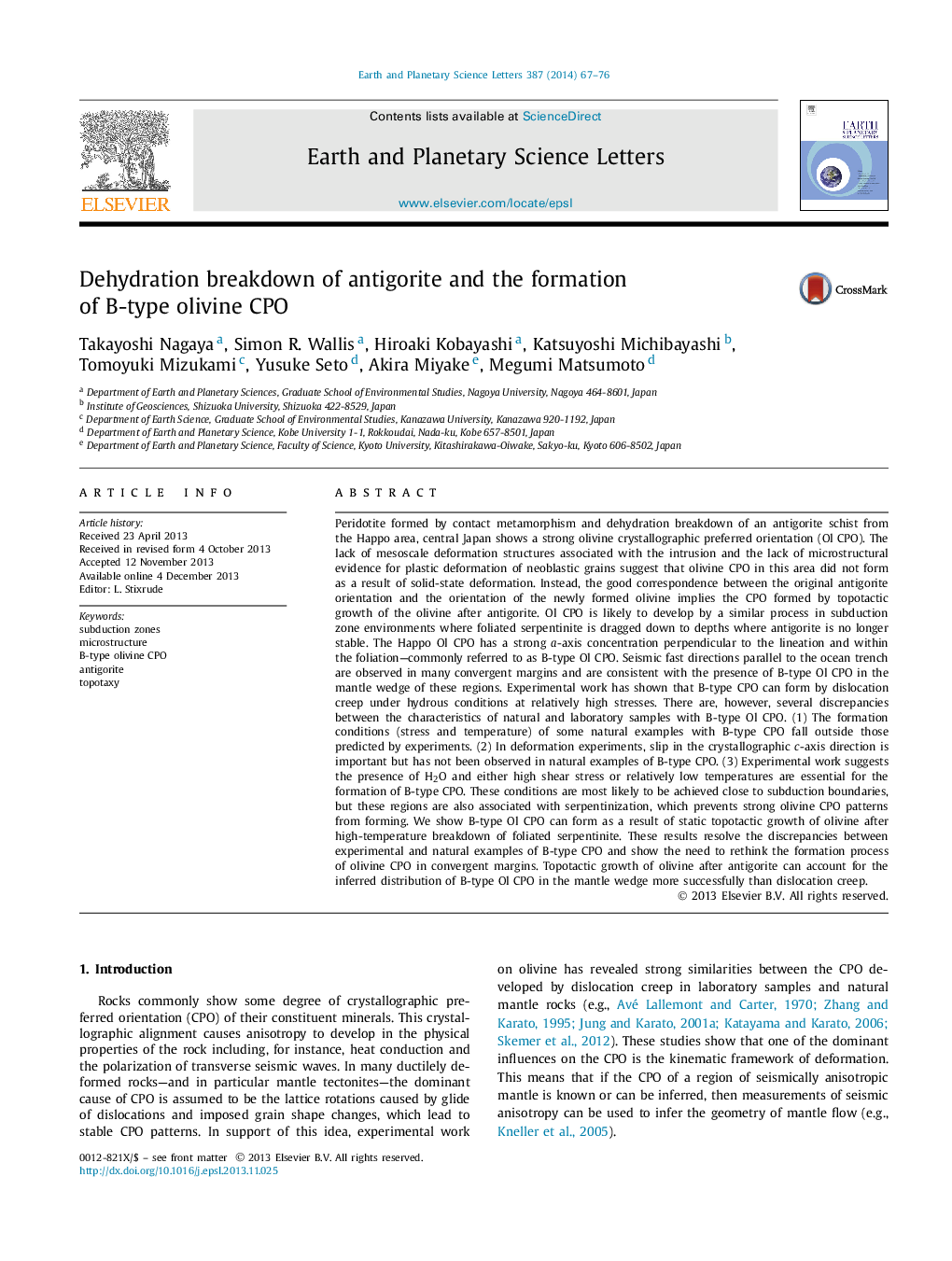| کد مقاله | کد نشریه | سال انتشار | مقاله انگلیسی | نسخه تمام متن |
|---|---|---|---|---|
| 6429632 | 1634769 | 2014 | 10 صفحه PDF | دانلود رایگان |

- Olivine CPO can form by topotactic growth after aligned antigorite.
- B-type olivine CPO is not necessarily the result of mantle flow.
- B-type olivine CPO may be more widespread in the wedge mantle than previously thought.
Peridotite formed by contact metamorphism and dehydration breakdown of an antigorite schist from the Happo area, central Japan shows a strong olivine crystallographic preferred orientation (Ol CPO). The lack of mesoscale deformation structures associated with the intrusion and the lack of microstructural evidence for plastic deformation of neoblastic grains suggest that olivine CPO in this area did not form as a result of solid-state deformation. Instead, the good correspondence between the original antigorite orientation and the orientation of the newly formed olivine implies the CPO formed by topotactic growth of the olivine after antigorite. Ol CPO is likely to develop by a similar process in subduction zone environments where foliated serpentinite is dragged down to depths where antigorite is no longer stable. The Happo Ol CPO has a strong a-axis concentration perpendicular to the lineation and within the foliation-commonly referred to as B-type Ol CPO. Seismic fast directions parallel to the ocean trench are observed in many convergent margins and are consistent with the presence of B-type Ol CPO in the mantle wedge of these regions. Experimental work has shown that B-type CPO can form by dislocation creep under hydrous conditions at relatively high stresses. There are, however, several discrepancies between the characteristics of natural and laboratory samples with B-type Ol CPO. (1) The formation conditions (stress and temperature) of some natural examples with B-type CPO fall outside those predicted by experiments. (2) In deformation experiments, slip in the crystallographic c-axis direction is important but has not been observed in natural examples of B-type CPO. (3) Experimental work suggests the presence of H2O and either high shear stress or relatively low temperatures are essential for the formation of B-type CPO. These conditions are most likely to be achieved close to subduction boundaries, but these regions are also associated with serpentinization, which prevents strong olivine CPO patterns from forming. We show B-type Ol CPO can form as a result of static topotactic growth of olivine after high-temperature breakdown of foliated serpentinite. These results resolve the discrepancies between experimental and natural examples of B-type CPO and show the need to rethink the formation process of olivine CPO in convergent margins. Topotactic growth of olivine after antigorite can account for the inferred distribution of B-type Ol CPO in the mantle wedge more successfully than dislocation creep.
Journal: Earth and Planetary Science Letters - Volume 387, 1 February 2014, Pages 67-76